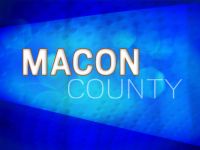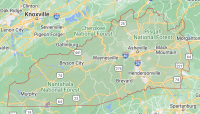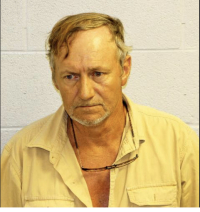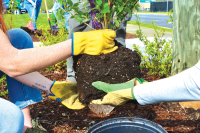HandMade engages Bryson to create road map for a better town
In the sunny, windowed front room of the Swain County Chamber of Commerce, a group of people are gathered around a table littered with maps, the light from the windows filtering through more maps and photos and wishlists that have been taped there. They’re a conglomeration of planners, business-owners and residents and they’re here to discuss the future of Bryson City.
In another corner on a cluster of leather couches and wooden chairs, more locals sit with team members from HandMade in America, who are assessing the town’s needs and wants, and will ultimately make recommendations on how to get there.
This is the second assessment Bryson City’s done with HandMade in America, a regional nonprofit that promotes crafts and cultural heritage as an avenue to economic development.
The town has been part of the group’s small towns program for nearly 15 years now, but their last assessment was in 1999. And, needless to say, a lot has changed since then.
So HandMade leaders decided it was time to bring pretty much everyone back to the table — business owners, the outdoor community, non-profits, churches, artists, residents, business organizations, even students — and ask them what they want their own town to become.
Luke Perry with the Asheville Design Center, who is helping with the project, spent the morning stationed in front of various maps of the town, sketching people’s ideas and wishes onto sheets of overlayed tracing paper. The idea, he says, is to find patterns or connections between what people want and how it can be achieved, connections that might not always be obvious.
Related Items
Take the Tuckasegee River, a concept that kept resurfacing as people drifted in and out of the brainstorming session, looking at the aerial views of the town’s streets and postulating what could make them better.
“How can we activate the river?” That, Perry says, is a key question the community has been asking for years but never solved.
Everyone kept mentioning how inaccessible the river is — apart from Island Park, the best you can do is admire the waterway from the bridge and hope you don’t get sideswiped by the traffic flying by. And that leads to another problem: by car is how most to get to Island Park — there’s no dedicated sidewalk — and many other places outside the small downtown district.
So that led Perry and his colleagues to start sketching out how, exactly, the town could be more bike-and-pedestrian friendly, while giving residents and visitors better access to the river at the same time.
“One of the biggest things we’re doing here is telling stories,” says Perry. “How do you tell the story of Bryson City?”
Judi Jetson is at the head of the effort. She’s the director of the small towns program at HandMade in America, and it’s her job to get those stories, going around asking people what makes their community great and what could make it better.
For her, assessments like these are about creating the intersection between idea and implementation.
“This is not a pie-in-the-sky group,” she says. “It’s easy to have ideas, but if you never find out how to implement [your plan], it just sits on the shelf and nothing gets done with it.”
Perry echoes those sentiments. “We don’t want something that’s going to be a great plan and published with pretty pictures, but it’s never used,” he says.
So the ideal end-product of the exercise will be an action plan handed over to town officials, listing out 40 to 60 real — and feasible — suggestions for improvements, complete with recommendations on how to make them work.
Looking for local options
For Bryson City, a lot of what Jeston et al. heard from residents wasn’t just about improved pedestrian access, but more amenities for the community.
“This county needs a recreation center,” said Megan Cookston, who works with Yellow Rose Realty. “That’s the one thing I miss about living in Jackson County.”
Others repeated the general sentiment, noting that while there is a surfeit of stuff for tourists to do, activities and events geared towards locals are relatively few and far between.
It’s insider knowledge like this that Jetson says is vital to making a helpful, useful plan for a town. That nugget, for example, is something that she says she’d never have known without getting in-depth local feedback.
But appraisals like these aren’t just about slating towns, enumerating everything they don’t have to offer. There’s a reason people move to and stay in Bryson City, and it isn’t just the pretty scenery. So looking at what works, and why, is a good place to start when seeking to ferret out improvements.
Jeston and her team did interviews with a number of groups throughout the day, but in this particular idea session, many identified the small town’s smallness as its best asset, topped off by its naturally appealing locale.
“Well, just look around,” exclaimed Cookston, when Jetson asked the assembled crowd how they would pitch the place to outsiders. “And you can be in the National Park in three minutes.”
Diane Jones, who runs the Rocky Face Mountain development, said the chance to get out of the rat race is what makes the town so attractive. “That’s why I moved here,” says Jones. “There are people coming out of Atlanta to get away from the neon and get to the old-time Mayberry.”
Pulling against that slightly, though, is the truth that this is, after all, the 21st century, the digital age. Old-time and slow-paced are both valuable, but on the other side of the coin is the real need for connection, a struggle in the area.
High-speed internet and wi-fi were both sources of considerable ire for some locals, who made the insightful point that the idyllic atmosphere is only desirable long-term or even, increasingly, short-term inasmuch as it is connected to the wider, less-idyllic world.
That’s a problem that will probably be closer to the large-scale end on the recommendation continuum.
But Jetson says that’s the point. Yes, everything they suggest will be doable, but some things are more quickly completed than others.
“It’s going to be little things, like cleaning up a piece of property that’s really an eyesore, to more ambitious things,” she says. And with this visit, her team is taking the first steps toward helping the town work, in big and small ways, to make it a better, more vibrant place for locals and tourists alike.









